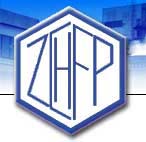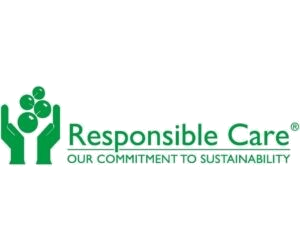Dual education
Dual education is a close connection of general and vocational theoretical education at
a secondary vocational school with practical training at a specific employer. It is an important
tool for reducing youth unemployment.
Dual education based on a
teaching contract between an employer and a pupil and a dual education contractí
between an employer and a secondary vocational school combines practical lessons at
an employer with theoretical lessons at a secondary vocational school.
In the dual education system, pupils prepare for the pursuit of a profession, according
to the specific needs and requirements of the employer. The organisation, content
and quality of practical education of pupils in the dual education system is the sole
responsibility of the employer, who covers all costs associated with the financing of practical
lessons. The cost of practical training at an employer is defined by the Income Tax Act
as a taxpayer's tax expenses for corporate income tax.
Pursuant to § § 21a of Act no.
61/2015 Coll.
on vocational education and training (VET), an employer who provides practical education
in the dual education system (hereinafter referred to as the "contribution") from
the budget chapter of the Ministry of Education, Science, Research and Youth of
the Slovak Republic (hereinafter referred to as the "Ministry of Education") is provided
with a contribu-tion for the provision of practical education in the dual education
system.
The following shall be entitled to the allowance:
- small or medium-sized enterprise8(b) for an amount of EUR 1 000;
- an employer who, during the school year, provided a pupil with practical lessons in the amount of more than 400 hours, in the amount of EUR 700, or
- an employer who provided a pupil with practical lessons in the range of 200 to 400 hours during the school year, in the amount of EUR 300.
The employer is entitled to the allowance for each pupil with whom he has concluded a teaching contract in the school year in which he first began to provide this pupil with practical lessons in the dual education system. An employer who provides pupils with practical lessons in the dual education system submits a written application for a contribution by 31 March of the relevant school year.
A copy shall be attached to the application:
- Certificate,
- dual education contracts;
- teaching contract concluded with the pupil.
The Ministry of Education provides a contribution to the employer for each pupil in the dual education system once a year on 30 June of the respective school year in which the employer provided the pupil with practical lessons in the dual education system. Combining practical education at an employer with theoretical education at a secondary vocational school is one of the main tasks in eliminating the mismatch between the skills of school graduates entering the labour market and the needs of employers. Practical lessons in the dual education system are carried out at the workplace of practical education at the employer. The workplace of practical teaching is considered to be an organizational part of the employer or another premises to which the employer has the right of ownership or usufruct, if at the same time it has been issued a certificate on the employer's ability to provide practical lessons in the dual education system. The certificate shall be issued, at the request of the employer, by the competent professional body or competent professional body having material competence in the field.
The employer's ability to provide practical lessons in the field of study or in the field of study in the dual education system means, in particular, material, technical, professional and personnel readiness to provide practical lessons in accordance with the Education Act the Act on Vocational Education and Training and on Amendments to Certain Acts and the Decree on Secondary Schools. At the same time, it also means ensuring the pupil's preparation for the pursuit of the profession in accordance with the state educational programme.
Benefits for the employer:
- Selection of pupils for dual education directly by the employer and admission of pupils to school with the consent of the employer.
- Teaching on new technologies directly at the employer.
- Highly skilled workforce, smooth transition from education to labour market.
- Impact on the content of vocational education in the design of school curricula.
- Verification of graduate's knowledge by the employer at graduation: school-leaving examination, final exams.
- Possibility of concluding a contract on a future employment contract, which may also include the pupil's commitment to work for a given period.
- Cost savings on recruitment (employment agencies), employee retraining.
- Acquisition of work habits directly in the production process at the employer.
- Supervision of the dual education system by employers' associations.
- Positive perception of the employer in the region.
- Increase the stability of the company.
Processes of employer entry into the Dual education system:
https://siov.sk/vzdelavanie/dualne-vzdelavanie/dokumenty/
https://dualvkocke.sk/index.php/firmy/
Verification of the employer's competence – application
žiadosť
k overeniu spôsobilosti 2019
DUAL EDUCATION 18+
SThe dual education system can also be used for subsequent forms of education, which are regulated by .
on education and training (Education Act). Graduates of previous studies aged 18 and over
enter the follow-up study. Therefore, in simple terms, this study in the dual
education system is also referred to as "Dual education 18+".
Dual education 18+ is also suitable for employers providing practical lessons within vocational
education and training for professions with an increased risk of damage to health,
which are not suitable for underage pupils. Dual education 18+ provides the employer with an accelerated path to acquiring a qualified workforce, which can be reduced to 1, 2
or 3 years depending on the choice of form of continuing vocational education
and training.
Forms of Dual Education 18+
| Forms of studies | Length | Designed for graduates | Fields of education | Proof of completion | Proof of qualifications |
|---|---|---|---|---|---|
| Abbreviated study | 1-year | At least with Secondary vocational education (teaching letter) | All 3-year apprenticeships trade union | Certificate About the final exam | Not |
| Abbreviated study | 2-year | At least with secondary vocational education (teaching letter) | All 3-year apprenticeships trade union | Certificate About the final exam | Apprenticeship letter |
| Post-secondary Qualifying study with expert Training | 2-year | At least complete secondary vocational or general education (baccalaureate) | Fields of study with code branch xxxx K, if it is mentioned in a note in the list of departments Education* | Certificate About the school-leaving examination (only specialist file Baccalaureates) | Apprenticeship letter |
| Post-secondary Qualifying study with professional Practice 2-year | 2-year | At least complete secondary vocational or general education (baccalaureate) | Fields of study with code branch xxxx M, if it is mentioned in a note in the list of departments Education* | Certificate About the school-leaving examination (only specialist file Baccalaureates) | Not |
| Post-secondary Higher professional study with professional Practice | 3-year | At least complete secondary vocational or general education (baccalaureate) | Fields of study with code Department xxxx Q | Certificate about graduate Test | Graduate diploma, degree "DiS" |
Note: Post-secondary 2-year qualification study may take place in the field of study with the field of educa-tion code xxxx K or xxxx M, if stated in the note to the field of education in the list of fields of education of Decree No. 287/2022 Coll. on the system of fields of education for secondary schools and on the material scope of education departments of education. If teaching in a field of study is organized in the form of qualification study with vocational training, the letter "K" is replaced by the letter "N" in the field of study code. If teaching in the field of study is organized in the form of a qualification study with professional experi-ence, the letter "M" is replaced by the letter "N" in the field of study code.
Dokuments:
Dual Education
18+
Links:
- Duálne vzdelávanie
- https://dualvkocke.sk/
- https://www.trendyprace.sk/sk
- https://www.minedu.sk/system-dualneho-vzdelavania/
- https://mojdual.sk/
- https://www.mojastredna.sk/dual/
- AZZZ vzdelávanie
- ŠIOV – ŠVP a normatív - skupina odborov 28 Technická a aplikovaná chémia
Hattalova 12
831 03 Bratislava, Slovakia
Phone.: +421 2 4820 9001
ID #: 308 400 74
Tax ID #: 2020 868 949
e-mail: zchfp@zchfp.sk
www.zchfp.sk









